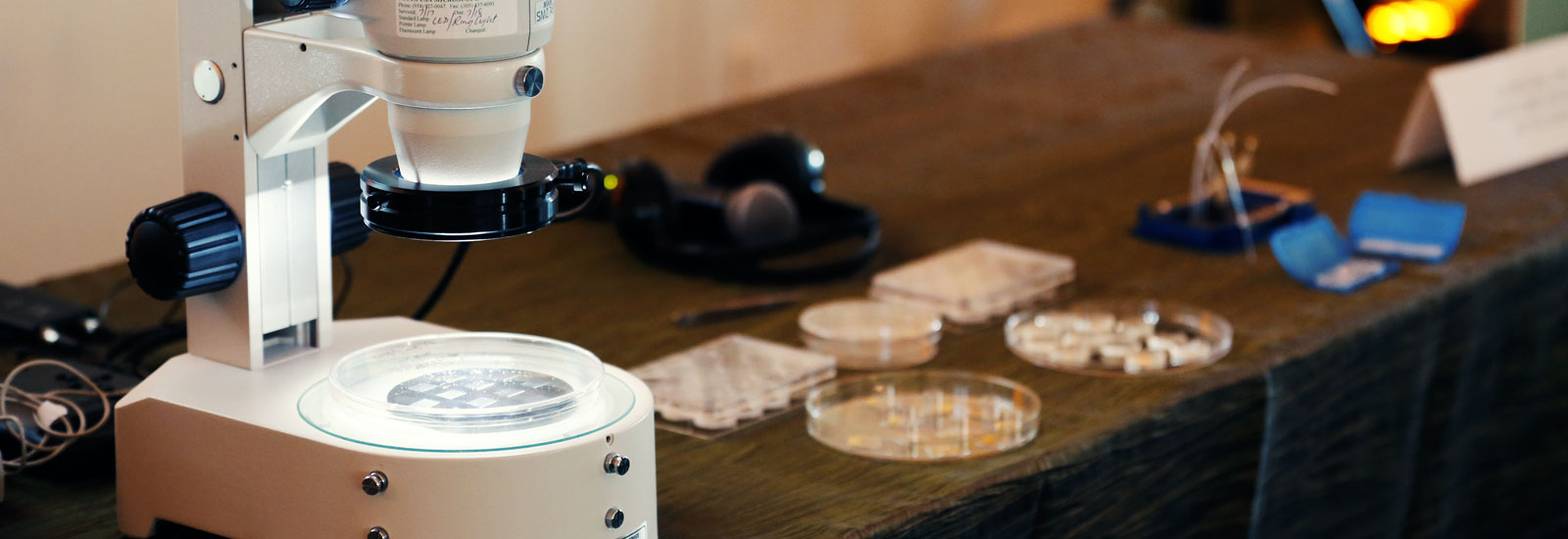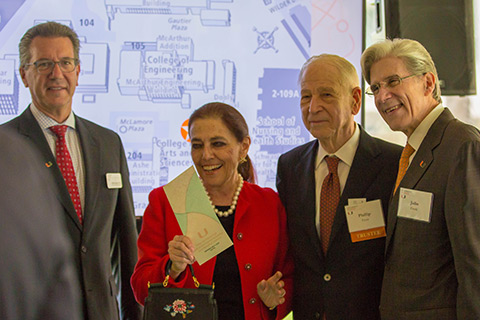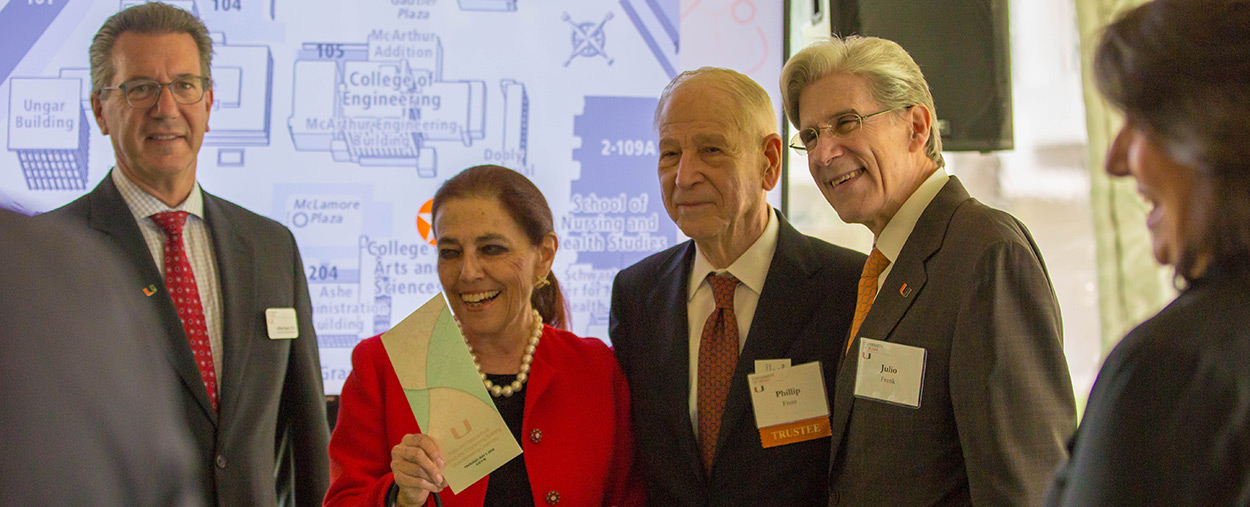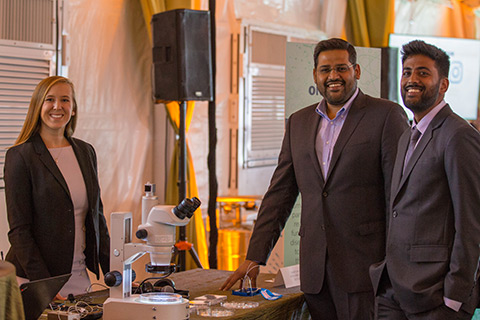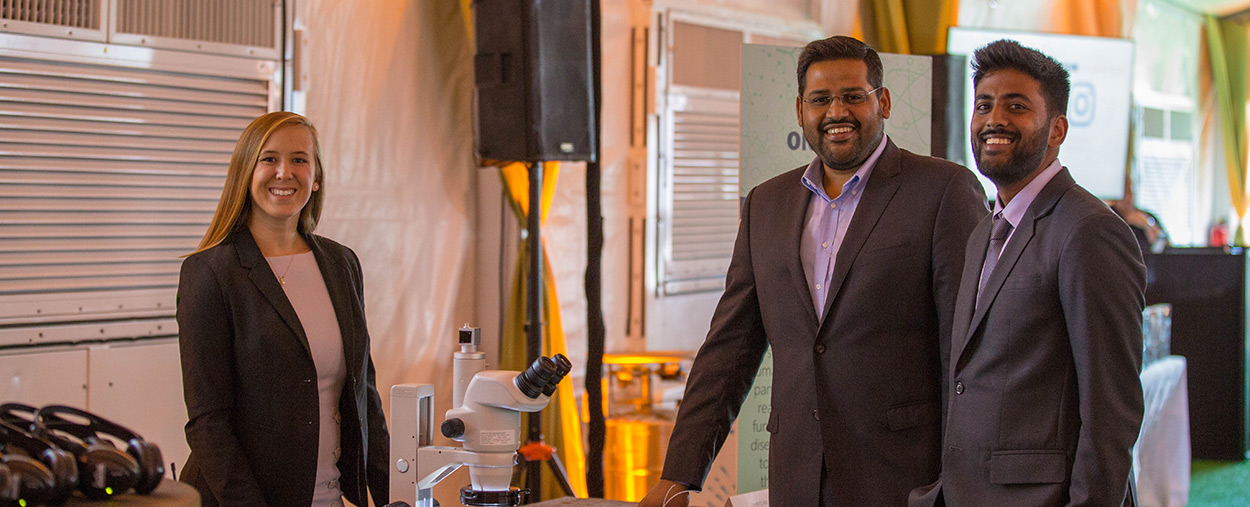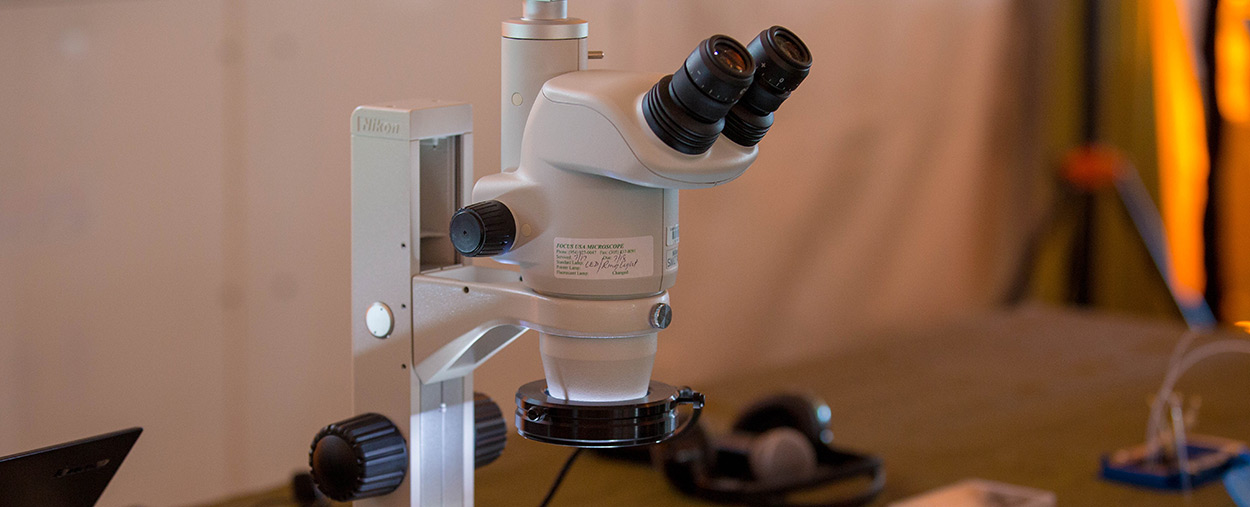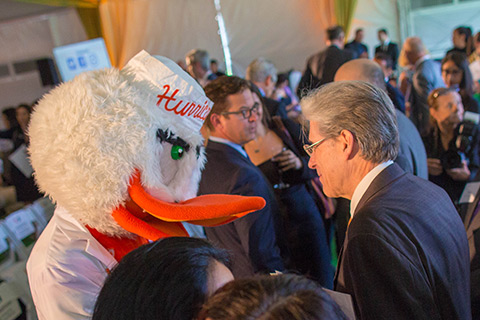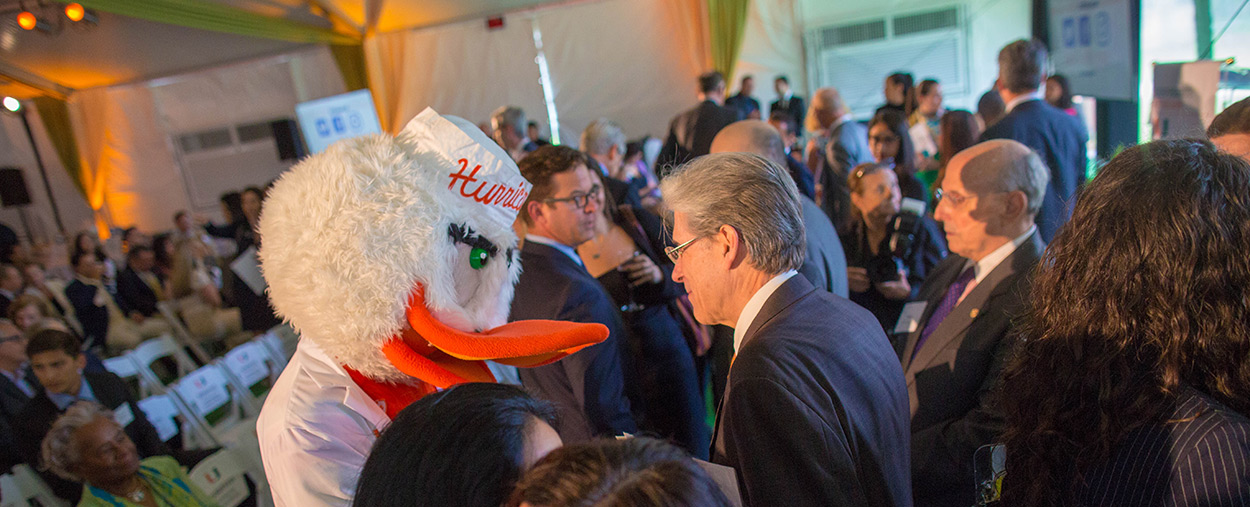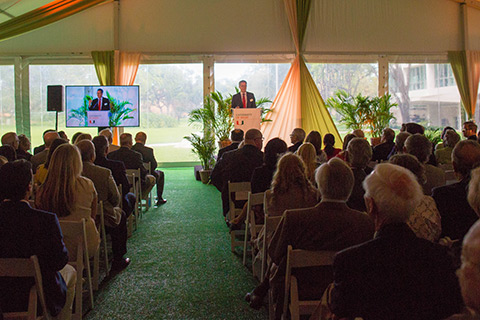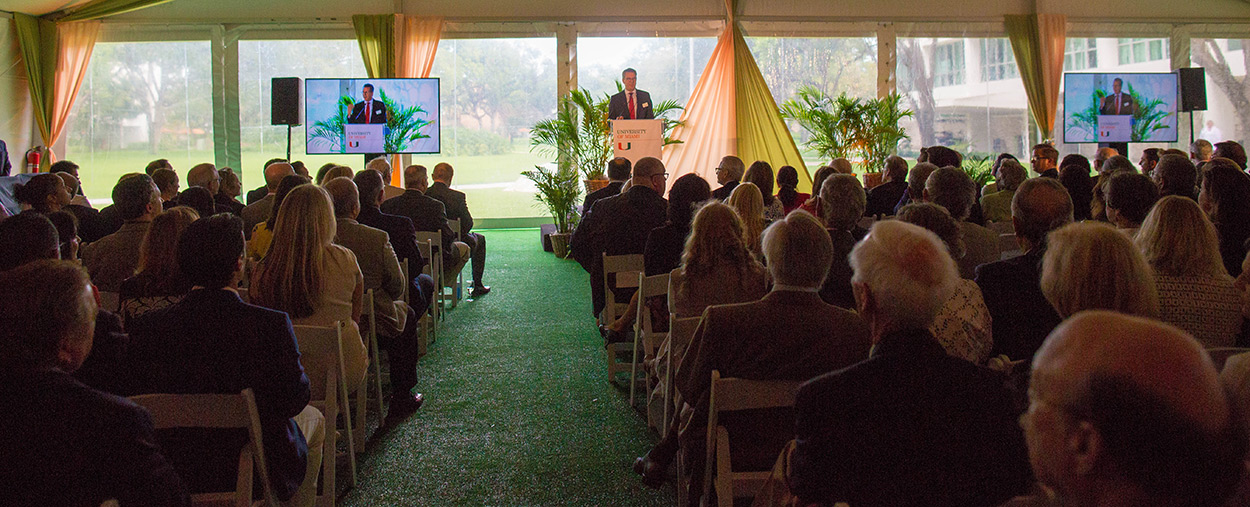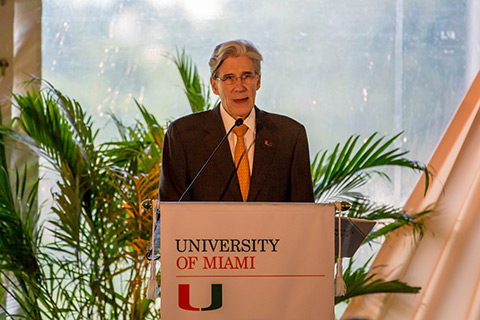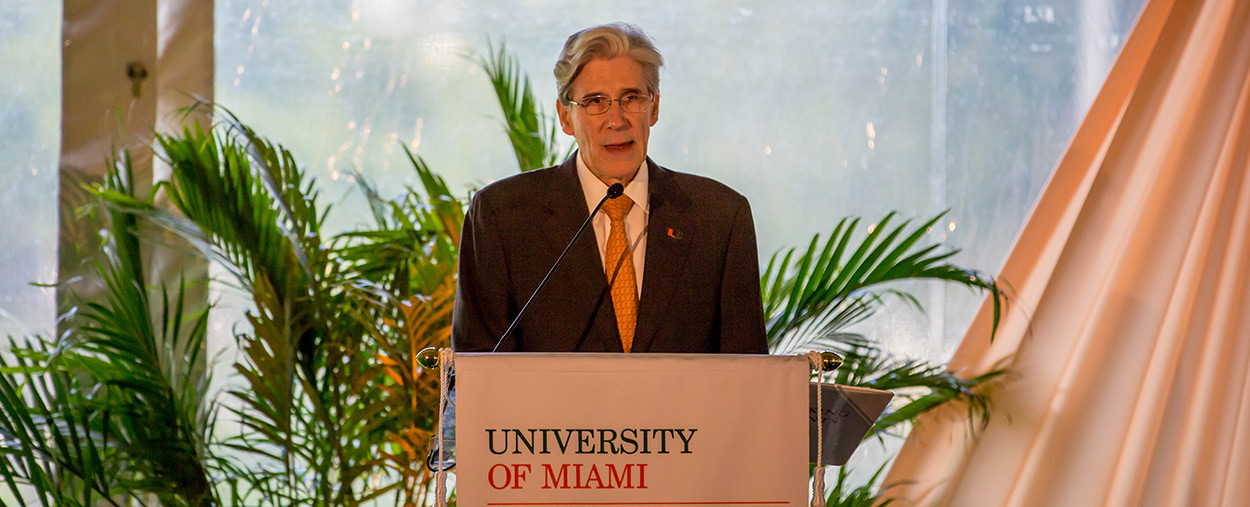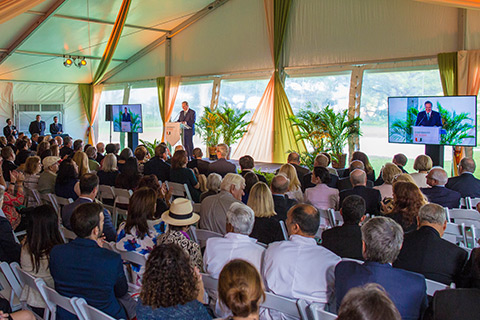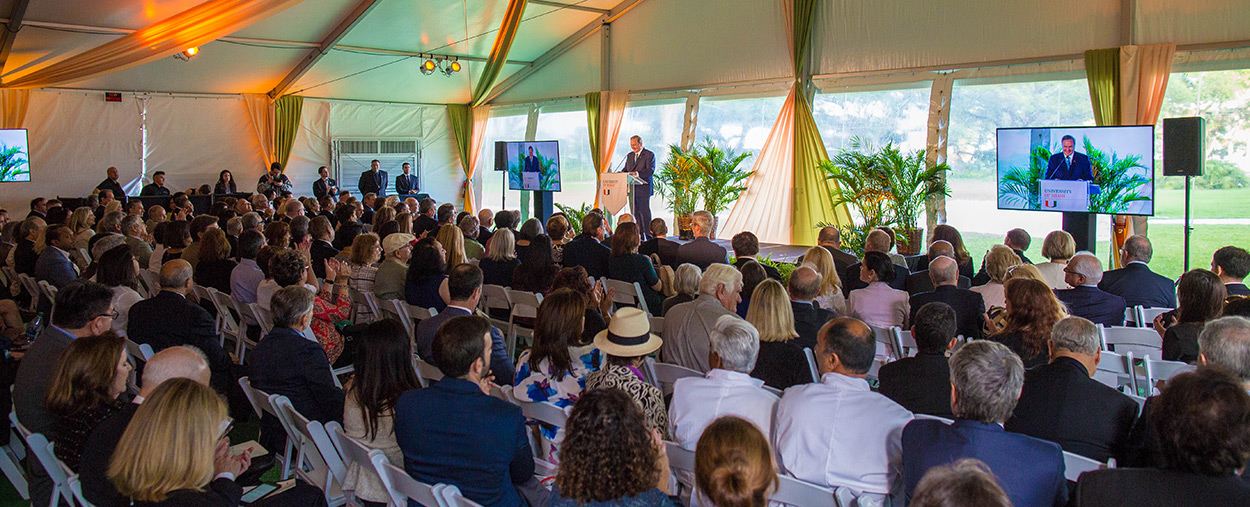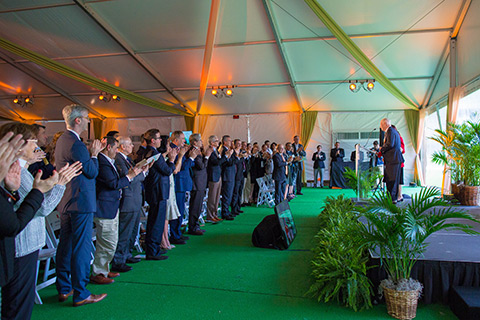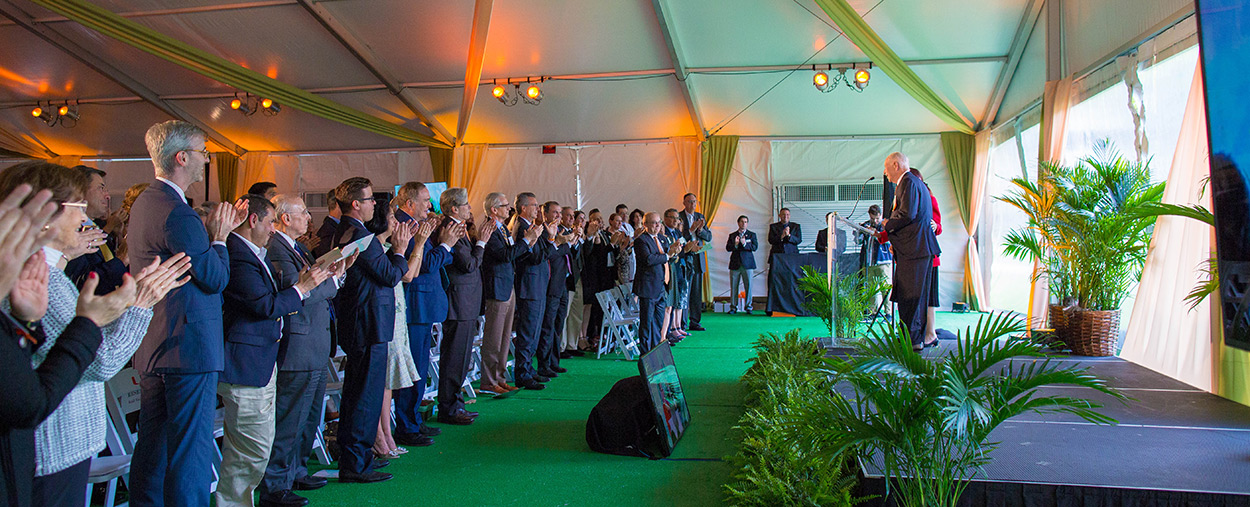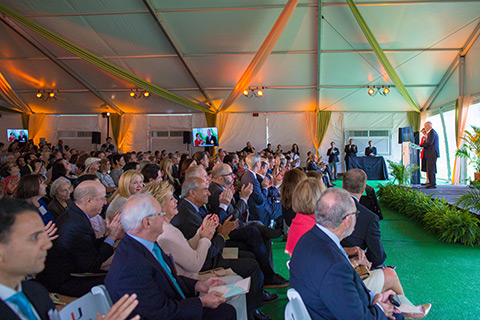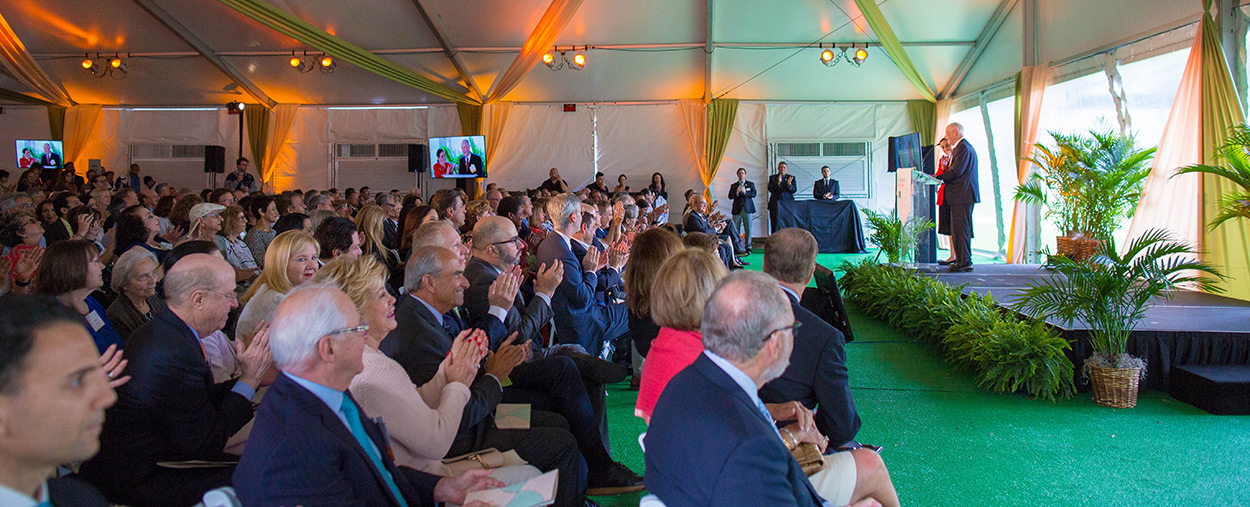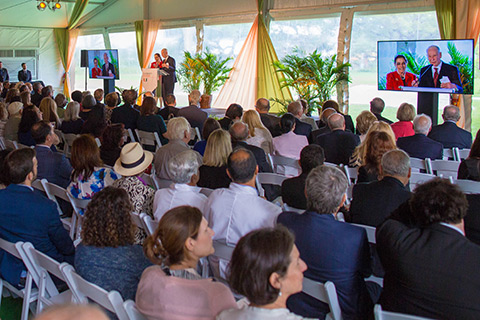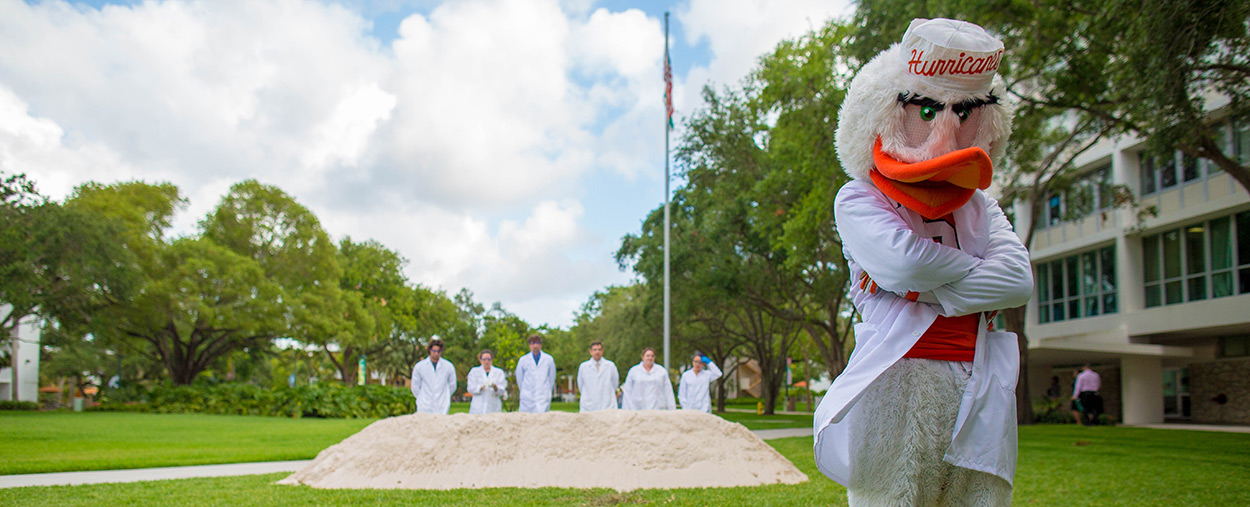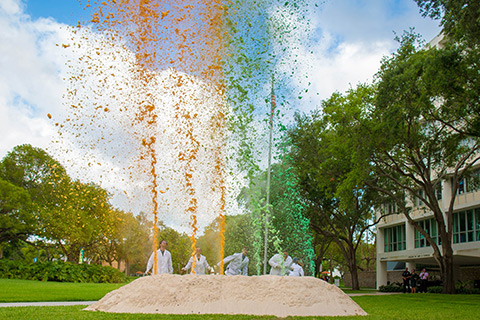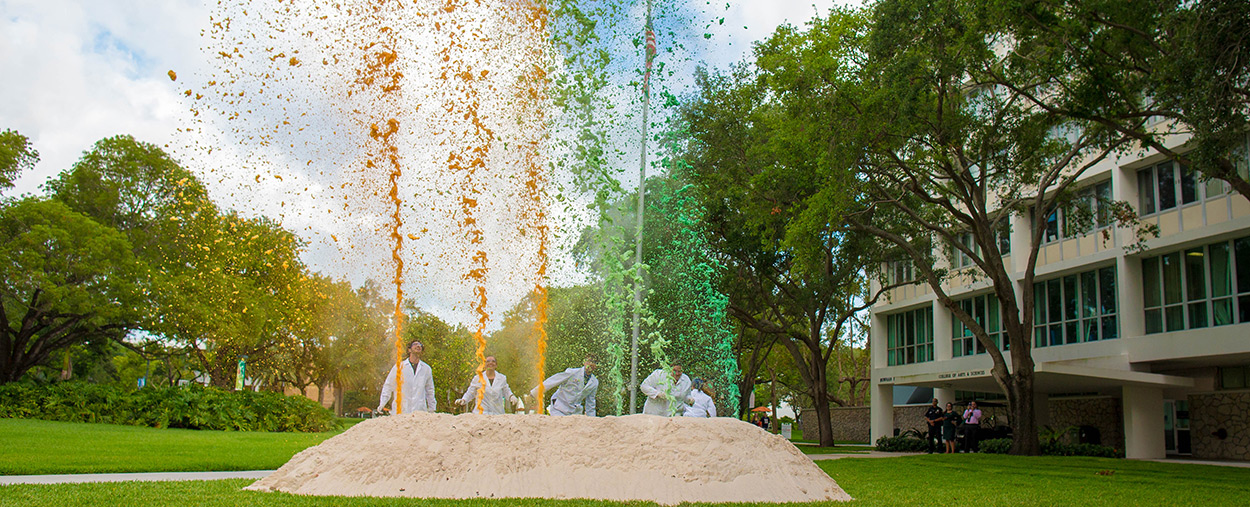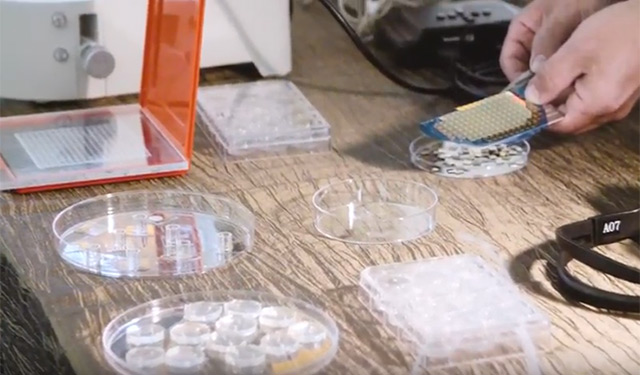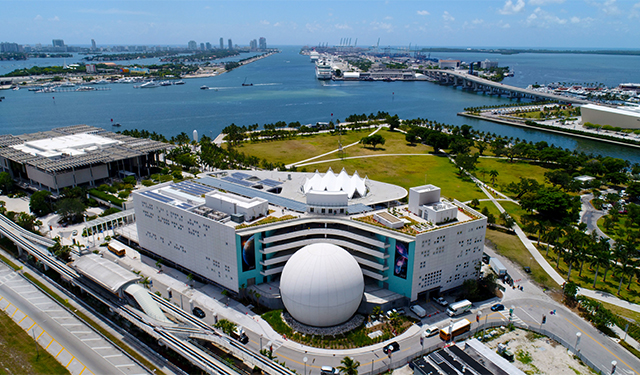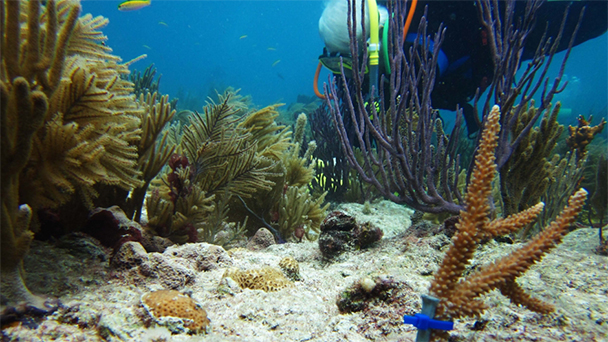Those disciplines are already thriving at UM, and Thursday about 300 invited guests got an up-close look at what’s taking place in UM’s cutting-edge labs.
This includes the work of Agarwal, assistant professor of biomedical engineering, whose organs-on-a-chip research simulates the activities, mechanics, and physiological response of entire organs and organ systems, leading to a less time-consuming and more effective way to test new drugs. And the work of assistant professor of Chemistry Oliver, whose research in capturing energy from sources other than batteries, could lead to clothes that charge your smartphone as you walk.
Graduate and undergraduate students are responsible for a good portion of STEM research at UM, as well. Rachel Besser, a research assistant in biomedical engineering who works in Agarwal’s lab, is collaborating with a Miller School clinician in an investigation of Charcot-Marie-Tooth disease, using organs-on-a-chip technology to create an out-of-body platform to study the cells of patients who have the neurological disorder.
Crystal Nattoo, a junior majoring in electrical engineering, is helping to create sensors that can detect different concentrations of oxygen and differentiate solvents—work that has major implications for the medical field, she said.
“For future institutes, we will continue to galvanize our scientists, researchers, and students to delve into the big problems that matter, be they in neuro-engineering, smart cities, data science, or any of the other disciplines that will shape the future of our planet and our society,” said Duerk.
Indeed, of the Frosts’ $100 million gift, $30 million is designated to the creation of at least 13 chairs in STEM fields, with $3 million set aside for graduate student support.
The creation of the Frost Institutes, patterned after the National Institutes of Health, is the backbone of STEM@UM, one of the nine transformational initiatives to propel the University toward its greatest aspirations by its centennial in 2025, allowing for STEM growth, a stimulation of interdisciplinary research collaboration, and engagement with greater Miami as a hemispheric innovation hub.
Richard Fain, chair of UM’s Board of Trustees, praised the Frosts for their gift. “The Frosts could support whatever causes they want,” said Fain. “But for them to support Miami and the University of Miami is truly amazing, and we’re lucky to have them.”
But Phillip Frost, a UM trustee for 35 years, deflected Fain’s praise, saying “we are all emissaries and are all visionaries.”
Said Frost, “It’s up to us to either give what we can or convince other people to get involved in good causes.”



